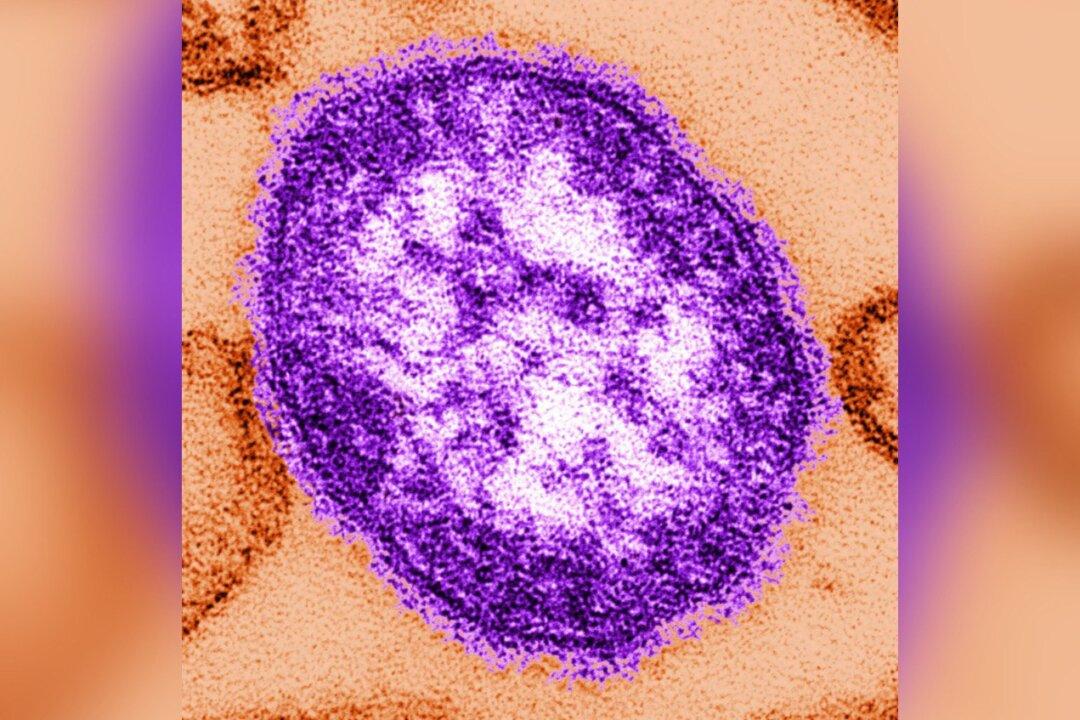VANCOUVER—A national agency leading a network of labs hunting for variants of COVID-19 is aiming to double its efforts across Canada as part of a global surveillance initiative to keep up with new strains that may become more prevalent.
Viruses naturally mutate over time, and several COVID -19 variants of concern have been identified, including those that were first associated with the United Kingdom, South Africa, Brazil, and Nigeria, all of which have been detected in Canada.
New variants, some of which are more transmissible, are identified using equipment that sequences the virus’s genetic material or genome in patients to show that the main variant has developed a group of mutations on what could be considered the family tree of the virus.
Dr. Catalina Lopez-Correa, executive director of the Canadian COVID-19 Genomics Network, which was created in April 2020 as part of Genome Canada, said the emergence of the variant linked to the UK led to an increase in capacity last December at six regional centres and public health labs.
“We needed also to develop a strategy to prioritize samples that we would sequence faster,” she said of a greater focus on some samples, including from communities with large outbreaks as well as patients who had travelled or been infected again.
The network involves a seven-days-a-week push to generate sequencing data with the help of a variety of experts, including “bench scientists” who do the sequencing, biostatisticians who analyze samples, and others who interpret the “family tree” of the virus as it produces new variants, some that could be concerning, Lopez-Correa said.
She said an average of five percent of COVID-positive samples are currently being analyzed in Canada to determine if there’s a change in the genetic blueprint of the virus, information that scientists in China decoded and shared with researchers around the world over a year ago.
The network’s goal is to sequence 10 percent of samples, Lopez-Correa said, adding the United Kingdom is sequencing eight to 10 percent of its positive cases while the United States analyzes less than one percent due to challenges co-ordinating efforts across jurisdictions.
“We actually were faster than the U.S. in identifying this (UK) variant in December, as soon as we started our sampling strategy. We were immediately able, in almost a week, to report some of those variants present in Canada,” she said.
“Being at five percent is already a good number. We’re trying to push that to be closer to what the UK is doing.”
Canada’s national surveillance strategy is to strike a balance between the number of samples that are sequenced and prioritization of those deemed suspicious, she said.
Iceland, for example, is sequencing almost all of its positive samples but Lopez-Correa said that plan in a small country with relatively few cases and “huge capacities” for genomics would not be helpful for Canada because there’s no advantage to sequencing all or even half the samples of hundreds of people that may have been infected in a single outbreak.
Scientists around the world are uploading thousands of sequences of existing and emerging variants into a non-profit international online database that serves as a watch list of mutations so over 100 countries can monitor for concerning variants in the samples they are sequencing.
“From a scientific perspective we are seeing something that’s unprecedented. This is the first time in history that we are able to use these genomic tools at a global scale to see the virus evolving in real time,” Lopez-Correa said.
Almost half a million sequences are currently available in the database, to which Canada has contributed 15,000 sequences so far as part of a reserve of information that is also assisting policy-makers in seeing where variants are coming from and where they are moving, she said.
The variant associated with the United Kingdom, for example, has been detected in 70 countries, Lopez-Correa said.
Variants of concern have been identified in every province, and by Feb. 16, a total of 638 cases were detected, the Public Health Agency of Canada said. Of those, 601 cases were of the strain first identified in the UK, with Ontario and Alberta recording most of them.
The agency said that of the 35 cases of the variant linked to South Africa, British Columbia had the most, at 19, while the province also identified the lone case associated with Nigeria. Ontario has one case of the variant first detected in Brazil.
The National Microbiology Laboratory, along with the Canadian COVID-19 Genomics Network, are working closely with provincial and international partners to investigate and assess the risk of the variants, including the one associated with travel to Nigeria after one case was reported in British Columbia last week, the agency said in a statement.
Dr. Bonnie Henry, B.C.’s provincial health officer, said about 10 percent of COVID-positive samples are being sequenced in B.C., and one of the mutations of the variant linked to Nigeria could be concerning if it transmits the virus faster than the main variant.
“That’s why our lab decided to include it in the ones that we monitor for,” she said.
Multiple countries are looking for ways to scale up genome sequencing through a more cost effective and automated system that would allow for faster analysis of samples as COVID-19 races against the development and deployment of vaccines, Lopez-Correa said.
“The virus can trick our immune system. It’s learning how it works.”





